Himalayan Adaptation, Water and Resilience (HI-AWARE) Research on Glacier and Snowpack Dependent River Basins for Improving Livelihoods
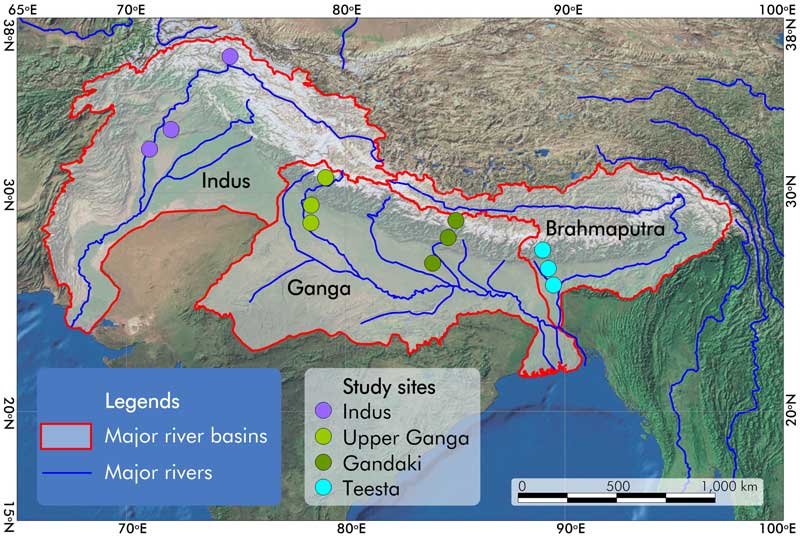
Summary
Implemented in the mountains and flood plains of the Indus, Ganges, and Brahmaputra river basins from 2014 to 2018, the HI-AWARE project addressed numerous knowledge gaps and influenced policy and practice to enhance the climate resilience and adaptive capacities of both vulnerable people, and their surrounding systems.
The Hindu Kush Himalayan (HKH) region, characterized by the youngest and highest mountain systems on earth, is not surprisingly home to the “Water Towers of Asia”. Being the source of ten large river systems in that continent, the region provides water and other important ecosystem services to more than 210 million people living in the mountains, and over 1.3 billion people in the plains. Yet, the HKH region is also highly vulnerable, especially when it comes to the impacts of climate change. Shifts in the timing and patterns of rainfall, and glacier and snow runoff in the region, are already having an impact on water resources, including water availability and energy security across the region. Moreover, climate change has equally affected the frequency and intensity of extreme weather events, with implications for the wellbeing and safety of the local population.
Despite people in the region have been adapting to climate change and coping with impacts in diverse traditional ways, innovative adaptation measures and strategies based on traditional and indigenous knowledge but supported by modern science were needed. The HI-AWARE project, one of four consortia of the Collaborative Adaptation Research Initiative in Africa and Asia (CARIAA), then looked to address existent knowledge gaps, as well as to influence policy and practice for improving the resilience of people and their systems most vulnerable to climate change. The solution consisted of various activities including research, pilot interventions, participatory monitoring, and assessment implemented at various scales in 12 sites at four study basins: the Indus, Upper Ganga, Gandaki and Teesta river basins and beyond (please refer to map).
The project looked to:
- Generate scientific knowledge on the biophysical, socio-economic, gender, and governance conditions and drivers that lead to people and regions being vulnerable to the effects of climate change.
- Develop robust evidence to improve understanding of the potential of adaptation approaches and practices, with an explicit focus on gender and livelihoods.
- Develop stakeholder-driven adaptation pathways based on the up and out-scaling of institutional and on-the-ground adaptation innovations.
- Promote the uptake of knowledge and adaptation practices at various scales by decision-makers and citizens.
- Strengthen the interdisciplinary expertise of researchers, students and related science and policy stakeholder networks.
A comparative, participatory, cross-scalar, trans-disciplinary, gender-inclusive, and integrative approach was employed with the intention to support the contemplation of short and long-term climate trends, physical and social vulnerabilities, and of adaptation strategies at various scales. Added to the development of new approaches and practices, the project also looked to build on existing initiatives and took advantage of the robust research and policy networks of the consortium members.
Overview
- Location:
- Implementation sites:
- Multiple countries
- Single location
- Mountain region:
- Hindu Kush, Himalayas
- Province:
- Hindu Kush Himalayan (HKH)
- Site locations:
Indus, Ganges and Brahmaputra river basins
- Solution scale:
- Ecosystem type(s):
- Solution type(s):
- Sector(s):
- Climate impact(s) addressed:
- Impact time-scales:
- Co-benefits:
- Climate risk reduction (e.g. reduced risk from floods)
- Economic benefits (e.g. job creation, tourism)
- Environmental benefits (e.g. biodiversity preservation, water security, food security)
- Political benefits (e.g. reduced displacement/migration)
- Technical benefits (e.g. innovative use of geographic information systems)
- Implementation timeline:
- 2014 - 2018
Solution details
Main beneficiaries & outcomes
Main beneficiaries of the solution include the more than 210 million people living in the mountains of the region, and over 1.3 billion people in the plains. Despite benefits being wide-reaching, the principal objectives of the project focused on enhancing the adaptive capacities and climate resilience of the poorest and most vulnerable habitants. To this purpose, the solution paid close attention to the socio-economic, governance, and gender characteristics of the population as the three main drivers of vulnerability. Some of the most vulnerable social categories were found to include wage earners, marginal farmers, fishermen, lower caste people, people with low access to politics, char dwellers, women, tea pickers, and migrant families.
Moreover, special importance was given to understanding the gender vulnerabilities in the different study areas within the participating countries, and adequate measures were carried out to ensure the strengthening of women’s adaptive capacities and resilience, and to promote their participation in the adaptation to climate change. The project contributed as well to the UNCEDAW Committee’s “General Recommendation No.37 on Gender-related dimensions of Disaster Risk Reduction in changing climate” which guides state parties on the implementation of their obligations under the Convention on the Elimination of All Forms of Discrimination against Women concerning disaster risk reduction in a changing climate.
Planning and implementation
The planning and implementation processes were under the responsibility of the HI-AWARE consortium members, which included: the International Centre for Integrated Mountain Development (ICIMOD), The Bangladesh Centre for Advanced Studies (BCAS), The Energy and Resources Institute (TERI), The Climate Change, Alternate Energy and Water Resources Institute of the Pakistan Agricultural Research Centre (CAEWRI-PARC), and the Alterra-Wageningen University and Research Centre (Alterra-WUR). ICIMOD functioned as the consortium leader.
The development of the project proposal comprised consultations with key stakeholders in the four participating countries, as well as a comprehensive review of relevant, but limited, literature to better understand the local and regional priorities and identify strategic opportunities. Moreover, trainings, and exposure visits, were also conducted to identify knowledge gaps and co-design interventions with communities that were later relayed to policy makers.
The project was divided into three working packages:
- Work Package 1 (Generating Knowledge) focused on the generation of scientific knowledge to address major research gaps that prevented the support of planned adaptation, especially in areas such as food and agriculture, energy, health and nutrition, urban habitat, and hazards management.
- Work Package 2 (Research into Use) systematically promoted the uptake of knowledge and adaptation practices at various scales by practitioners and policymakers, to reduce vulnerabilities of communities and build livelihood resilience.
- Work Package 3 (Strengthening Expertise) looked to build the capacity of researchers, students, and science and policy stakeholder networks to do interdisciplinary research on climate change vulnerability, resilience, and adaptation.
Under work package 2, the consortium members looked to engage with key stakeholders, including researchers, practitioners, and policymakers, at distinct levels to provide them with a mix of incentives, tools, and capacities that could help them use the research findings and pilot-tested measures from the project in the region’s communities. However, whether the research was to be used by the stakeholders depended on three factors: the political/policy context, the strength of evidence, and the quality of relationships between policymakers, practitioners, and research communities.
Finance
Most of the funding for HI-AWARE was provided by the Department for International Development (DFID), United Kingdom that was given to the International Development Research Centre (IDRC), Canada to manage. Additionally, the IDRC also contributed with funding. ICIMOD, in its role as the consortium manager, was accountable for its performance to IDRC, who then further reported to DFID.
In order to analyse important adaptation options and needs, the solution included the performance of socioeconomic cost-benefits analysis under the work package 1 (Generating Knowledge).
Innovation
The HI-AWARE project was unique in its design of working for climate adaptation across four neighboring countries. By fostering a landscape view, the project identified how local people in the different countries face similar challenges, and also provided extensive evidence on how climate-related changes in the mountains and plains impact river basins downstream. Furthermore, activities looked as well to work across the different involved actors, including government, civil society, research institutes, and universities.
The innovation aspect was highly important for the project and for each of the climate adaptation measures studied and supported in the project area. Regardless of the wide variety of measures supported across the region, the research uptake of the project aimed to promote evidence-based and tested innovative adaptation practices and approaches at various institutional levels for helping communities adapt to climate change in the most appropriate way. To this end, measures were closely accompanied by research in adaptation options, new tools and technologies, as well as by the improvement and promotion of tested existing practices.
Performance evaluation
The performance of the HI-AWARE work was evaluated by using the Research Quality Plus (RQ+) method, analysing the contribution of the project towards adaptation research. A rating, which integrates different criteria (Table 1), was provided by the Consortium Research Management Team (CRMT) of HI-AWARE in the form of self-assessment.
|
Rating research quality |
Unacceptable |
Less than acceptable |
Good |
Very good |
|
What is the integrity of the research outputs? |
|
|
|
X |
|
What is the legitimacy of the research outputs? |
|
|
|
|
|
(i) addressing potential negative consequences and outcomes |
|
|
X |
|
|
(ii) inclusiveness of vulnerable populations |
|
|
|
X |
|
(iii) gender responsiveness |
|
|
|
X |
|
(iv) engagement with local knowledge |
|
|
X |
|
|
How important is the research output? |
|
|
|
X |
|
How is the research output positioned for use/Research in use? |
|
|
X |
|
Table 1 – Four criteria rating research quality of HI-AWARE. Source: HI-AWARE Consortium Final Technical Report, 2018.
The integrity of the research outputs was rated according to the number of peer-reviewed articles published as part of the project, as well as the impact of the journals in which they were published, and their use in other relevant documents and decisions. On the other hand, the legitimacy of the research outputs was measured according to the project’s capacity to address potential negative consequences and outcomes in the study sites, the inclusiveness of vulnerable populations, the gender responsiveness, and the level of engagement with local partners and stakeholders in the planning and design of interventions. The importance of research was evaluated according to the level of innovation, necessity, and contribution of the project to the adaptation goals of the region. Finally, the positioning for use/ use of research was rated according to the applications and usage of the different research outcomes and pilots of the project by the government and other important stakeholders in favor of climate adaptation.
Long term project sustainability and maintenance
Using a Participatory Impact Pathways Analysis, the HI-AWARE consortium partners together with ICIMOD’s Strategic Planning, Monitoring, and Evaluation unit (SPME), developed a collectively-owned Theory of Change and Impact Pathways and a logical framework (logframe) based on it. Furthermore, a monitoring, evaluation, and learning report that included the overall program theory of change, the logframe, risk analysis, and outcome logic models specific for each basin were also produced. The theory of change was periodically revised by the project team as part of multiple reviews held over the lifetime of activities, while the logframe became the program’s main management tool, and progress against it was reported regularly.
The Theory of Change not only helped the consortium to visualize impact pathways, but also aided members to stay focused, align their thinking, and assess the larger impact of smaller outputs. It was revised in 2016 during the midterm review and modified to reflect the changed policy and practice scenarios in the region.
Capacities for design and implementation
Knowledge
The existent knowledge on climate impacts and coping techniques in the region was of paramount importance for the successful implementation of the project. Living under harsh conditions for generations, mountain communities are globally known for possessing valuable traditional knowledge regarding the environments in which they live. The HI-AWARE team had the objective not only to employ but also to assist and enrich such knowledge.
The project aim in the region was based on the idea that in addition to the ongoing coping strategies and autonomous adaptation measures that communities have come up with on their own, these should be supported by planned and modern science-based measures. Among other things, research carried out by the project looked to gather information on the local, seasonal, and sectoral impacts of climate change, as well as how people are adapting, and what adaptation measures work – when, for whom, and at what scale. Moreover, the project also contributed with new and accurate information on the main drivers of vulnerability in the implementation areas, as well as improved understanding of adaptation practices and new approaches to tackle those problems.
Under working package 1 (generating knowledge), the project’s extensive research resulted in 28 papers in top peer-reviewed journals including a paper in Nature – Climate Change, and at least 21 working papers. Likewise, two special issues focusing on Gendered Vulnerability and Urban Water were also published in the journals Environmental Development (Elsevier) and Water Policy (IWA Publishing) containing 20 papers. An additional 5 papers were equally submitted to different journals.
Technology
Under the Research into Use work package, the project aimed to promote the adoption of evidence-based, gender-friendly, and ecologically friendly technologies in the fields of flood resilience, climate-smart agriculture, and water and heat stress management that could help reduce vulnerabilities and solve some of the most relevant issues in the region. Supported by the knowledge and technological capacities of the consortium members, three pilot initiatives were co-designed and executed together with communities and other stakeholders.
In Bihar, India, a flood-affected area in the Gandaki River Basin, the Eco-San Toilets provided an ecologically sustainable and cost-effective adaptation option which apart from being a secure and appropriate sanitation option, helps to ensure safe drinking water and flood resilient housing. In Pakistan, the Climate Smart Agricultural Package was introduced for tackling climate-related agricultural issues. It combined water pumped through fixed and portable solar pumps with innovative farm practices around integrated water resource management using tunnel farming and high-efficiency irrigation systems like a sprinkler system, drip irrigation, composite energy powered irrigation systems, and agricultural diversification. Finally, in Bangladesh, the Climate and Flood Resilient House and the Heat Stress Management through Modified Roofs pilot interventions result in technologically sound and socio-culturally appropriate solutions that bring relief from inundation and livelihood insecurity to flood-affected areas.
Political / Legal
Since the initial steps of the project, the HI-AWARE consortium members were well aware of the importance of the political and governmental conditions not only as drivers of change but also as drivers of vulnerability. For each of the participating countries, the project looked to encourage the authority’s effective collaboration for finding and implementing adaptation solutions.
Among other relevant activities, local governments provided support for the pilot interventions and demonstrated their deep interest in tackling climate-related issues. In India, the government of Bihar recognized the Eco-San toilets measure as a sanitation facility for flood-affected areas and extended financial support for its execution. While in Pakistan, based on HI-AWARE’s work on solar water pumps, the Federal Government established the “Prime Minister’s support program for farmers for solar tube wells” and invited two experienced members of the project’s team to lead policy formulation. Moreover, the experience of the pilot will be used to reinforce climate-smart agriculture in Pakistan’s National Climate Change Policy. Likewise, in Bangladesh, the government has shown keen interest in replicating or incorporating the piloted technologies to promote flood-resistant housing in the area, as well as integrating experiences of the project into the revised Bangladesh Climate Change Strategy and Action Plan. Finally, in Nepal, government officials manifested deep needs and interest in the generation of a historical climate dataset and the tailoring of climate change scenarios that could help to fulfill the objectives of the National Adaptation Plan.
Furthermore, by creating robust knowledge and evidence, HI-AWARE had also the intention to help to generate and improving policies, plans, and strategies that help vulnerable populations adapt to climate change.
Institutional
The joint collaboration of the HI-AWARE members, which were in many ways leaders in their respective fields in their respective countries, was a fundamental factor for the successful accomplishment of the project. While ICIMOD was charged with leading the project, all consortium members worked closely through the whole planning and implementation processes. The co-development of an initial partnering agreement between members helped to build deep understanding, improving work organization, and solving occasional misunderstandings.
In addition, the project also worked with six strategic partners. These included FutureWater in the Netherlands; Practical Action in Nepal; Leadership for Environment and Development (LEAD) in Pakistan; and Megh Pyne Abhiyan (MPA), The Mountain Institute (TMI), and Centre for Ecology Development and Research (CEDAR) in India. Other key stakeholders such as research institutes, universities, NGOs, and civil society, including Master’s and Ph.D. students, also participated.
Socio-cultural
Given their extensive knowledge of their surrounding environment, HI-AWARE carried out numerous efforts for promoting the engagement of local communities in the activities of the project. By encouraging the participation of civil society, the project secured, among other things, the approval and successful adoption of solutions by community members, while also helping to integrate traditional knowledge and adaptation practices into the measures. More specifically, community members participated in the co-design, planning, testing, and implementation of pilots. Multiple consultations, training, and workshops were carried out.
Additionally, annual international conferences on Climate Change Adaptation Policy and Science were also organized in Kathmandu (2014 and 2018), New Delhi (2016), and Islamabad (2018), bringing together policy-makers, donors, researchers, and civil society participants engaged in climate adaptation. Furthermore, a range of panels and workshop sessions were held at other regional and global events including COP 22 (2016) and the World Sustainable Development Summit in Delhi (2016 and 2018), providing opportunities for peer-learning and networking beyond the organized interactions that the program entailed.
Outlook & Scalability
Barriers and adverse effects
One of the challenges of the project was related to the transboundary characteristic of the consortium. By operating across five different countries and two continents, the different working styles and cultures of the project members in occasions resulted in complexities and brought some minor problems. However, the creation and use of the HI-AWARE information portal, and the development of a robust monitoring and evaluation system, helped to overcome such problems. Added to this, in-person meetings served to build strong relationships, while regular “health-check” and reviews allowed for self-reflection for the consortium and to make amendments where needed. Likewise, the initial Partnership Agreement workshop was crucial to generate deep understanding among partners, and for grounding the collaboration in a set of principles to help inform how people would work together.
Transformation and future outlook
By generating knowledge on the current and future climatic conditions, the HI-AWARE project supports fundamental change in the Hindu Kush Himalayan region for climate adaptation and helps in the design of innovative and appropriate solutions that take into account the possible scenarios to which these communities are exposed. Up-to-date knowledge is consequential for the creation of robust adaptation strategies and policies as well.
Among other outputs, the project developed numerous climate datasets, and promoted the development of adaptation pathways in the region, helping to assess whether development is sustainable within the context of climate change and when adaptations are needed. The participatory development of such adaptation pathways helped to prepare for climate-related change and facilitates the transformation needed for adaptation.
Potential for upscaling and replication
Thanks to their relevant practices and approaches, the three pilot interventions implemented as part of the project, represented promising adaptation measures. From the initial planning steps, there was focus on future out-scaling and up-scaling. Nevertheless, considerable capital, mainstreaming, and political support are needed for this to occur.
HI-AWARE’s learnings have already contributed to the National Adaptation Plan in Nepal, where the adaptation pathways work was well integrated, including strong inputs on scenarios and gender issues. In India, the Department of Local Government has shown strong interest in replicating or incorporating the Climate and Flood Resilient Habitat solution in other areas of the country. Similarly, in Pakistan, the model for water management developed is planned to be replicated in the Hunza Valley in an area of 5,000 acres.
Finally
Acknowledgments
This survey was elaborated based on the information provided by the HI-AWARE Consortium Final Technical Report 2018, published by the HI-AWARE Consortium Secretariat. The solution description reflects the authors’ views and not those of the Bangladesh Centre for Advanced Studies (BCAS), Bangladesh; the International Centre for Integrated Mountain Development (ICIMOD), Nepal; Pakistan Agricultural Research Council (PARC), Pakistan; The Energy and Resources Institute (TERI), India; the Wageningen University and Research Centre (WUR), The Netherlands, or any other project contributor. Julia Aguilera Rodriguez filled in the information, while Simon Allen revised the solution description.
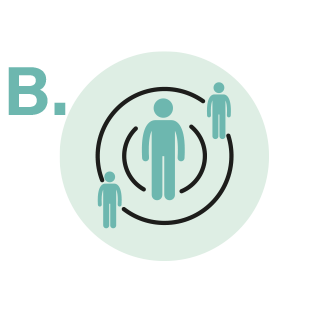
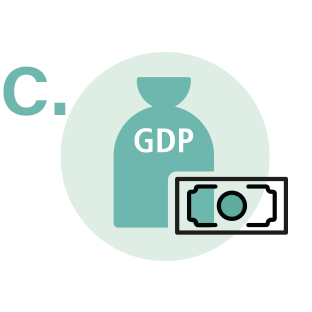
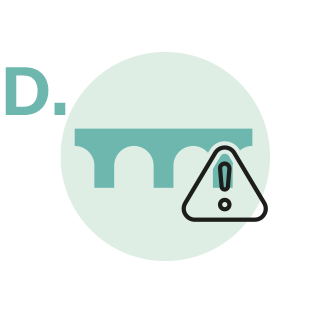
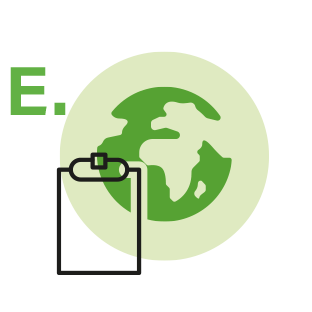


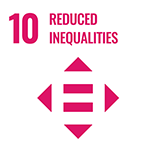
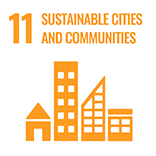
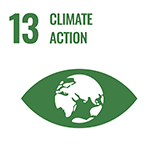
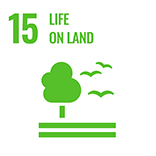
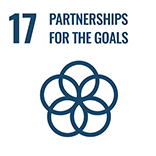
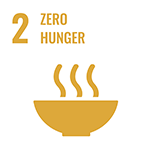
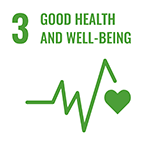
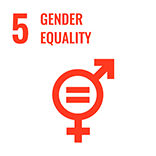
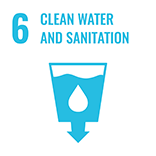
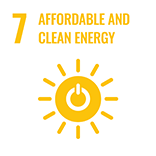
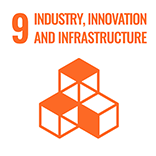
(0) Comments
There is no content